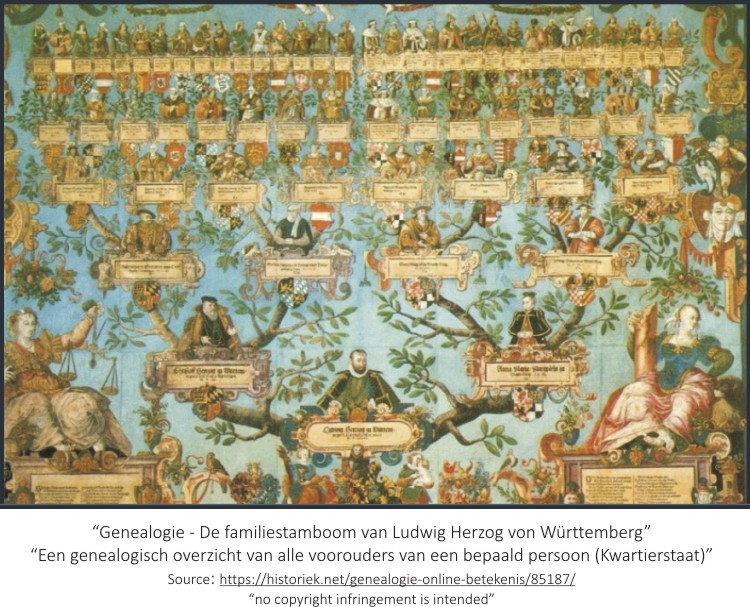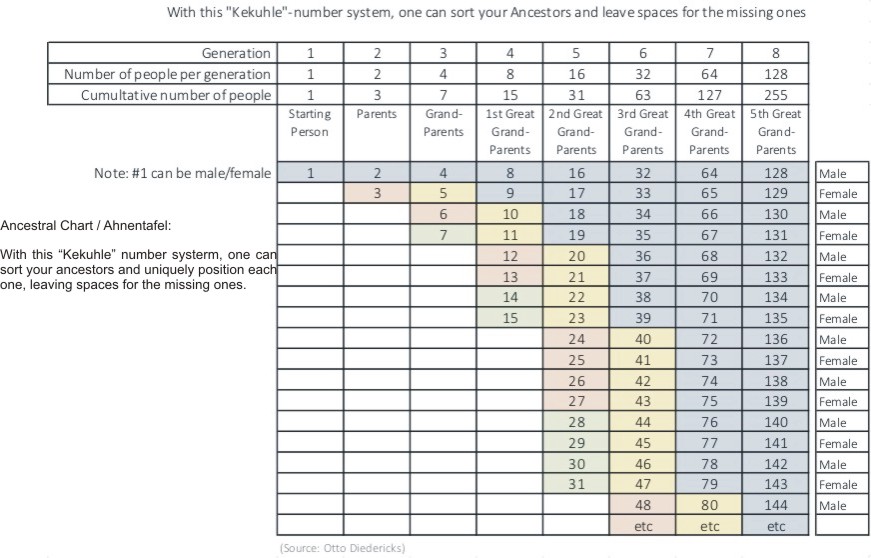Ancestral Chart Challenge
The “ancestral chart” / “pedigree chart” together with an “Ahnentafel” report are suitable formats to document family lineage and history. It is available in most genealogical software packages, such as Legacy, MyHeritage and RootsMagic. Below some clarification of the Concepts, Examples (which can also be downloaded together with a blank set of MSWord forms) and a nifty Planning Tool.
Having invited Gauteng North Branch members to submit their ancestral chart, we now expand GSSA’s Ancestral Chart project with a challenge to all other members of the society and genealogy researchers.
This project aims to document, share and preserve as much data of South African families as possible. In this way, the current South African Family Registers (SAF) will also be updated.
Choose to take part – it is entirely voluntary
- Data will be kept confidential within the Genealogy community
- Participation is not confined to GSSA branch members. Send this to your friends and acquaintances
- Select any #1 person (yourself, an ancestor, whomever) for your ancestral charts
- Commit to document at least 5 generations (31 individuals) or more
(Extensions and additions can still be submitted later)
- MS Word document
- MS Excel file
- PDF document
- Genealogy file, preferably exported to GedCom format
(Submit the Ancestral Chart and/or the entire database for safekeeping along with accompanying document(s))
- Remember to list bibliography and sources, where applicable.
Submit your results by email to




